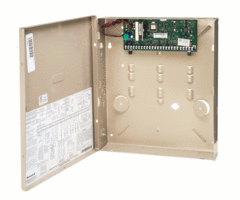Alarm Grid Video Recap: May 2nd & 3rd
Posted By Michael GorisHi DIYers! Last week was interesting for us, as we scrambled to get up some new content by the end of the week. We managed to upload seven new videos. This includes five from Joe, who was this week's MVP. We hope that you enjoy our latest videos and how they help you use your equipment.
Viewing an ADC-SVR122 Remotely
Joe explains how users can view video footage stored on an Alarm.com ADC-SVR122 Stream Video Recorder remotely. The ADC-SVR122 stores footage so that it can be viewed on Alarm.com. The footage can be viewed from Alarm.com, both through the website and through the mobile app. The ADC-SVR122 will need to be integrated with the user's Alarm.com account for this to work. The integration must be done from the Alarm.com website by choosing the option "Add Video Device". Up to eight (8) Alarm.com Cameras can be used with a single ADC-SVR122.
Excluding a Kwikset Z-Wave Lock
Joe teaches users how to exclude a Kwikset Z-Wave Lock from a Z-Wave network. There are a few different instances when you may want to exclude a Z-Wave lock. This step is important to perform before trying to the device to the network. Even if the lock is brand-new, it may have been previously paired with a network for factory testing purposes. You might also try excluding a lock and then re-adding it to the network as a possible troubleshooting step.
Factory Defaulting a Kwikset Z-Wave Lock
Joe demonstrates how to factory default a Kwikset Z-Wave Lock. Performing a factory reset is normally performed when a user inherits the lock from someone else and they want to start fresh with factory default settings. A user may also perform a factory default as a last ditch method for troubleshooting the device. Performing a factory default will clear all programmed user codes and remove all Z-Wave settings. The lock will need to be re-enrolled after performing the default.
Including a Kwikset Z-Wave Lock
Joe covers the process for including a Kwikset Z-Wave Lock into a Z-Wave network. This requires a Z-Wave controller or hub. By pairing a Z-Wave lock, you will be able to control it remotely from an interactive service platform on your smartphone. This is great if you ever need to let someone inside your home while they are away. You can then remotely lock the device after they leave. Z-Wave devices can also be set to activate based on a schedule or with certain predetermined events.
Joe talks about glass break simulators and how they are used. These devices will produce a sound that is specifically designed to activate glass break detectors. This is great for testing glass break sensors and making sure that they are detecting sounds and working properly. Most security equipment manufacturers have their own glass break simulators that they recommend for use with their equipment. Alarm Grid offers three (3) glass break simulators, which are the Honeywell FG701, the DSC AFT-100 and the Interlogix 5709C-W.
Carbon Monoxide Sensor Notifications from a Lyric via Apple HomeKit
Jorge discusses why a user will not receive specific carbon monoxide sensor notifications from Apple HomeKit when the CO sensor is used with their Lyric Alarm System. When HomeKit is used with the Lyric System, HomeKit will only provide specific notifications for burglary and intrusion zones. HomeKit will not provide specific alerts for life-safety zones. Instead, the user will only receive a General Lyric System Alert. That is why it is important to use Total Connect 2.0 alongside HomeKit. Unlike Apple HomeKit, Total Connect 2.0 will let you know exactly which zone was faulted, regardless of Response Type.
Programming Options Accessible Via Installer Code on the Lyric Alarm
In his triumphant return, Jarrett explains the programming options that can be accessed from the Installer Tools Menu on the Honeywell Lyric Controller. This menu is accessed using the system's Installer Code, which should be kept at its default of 4112. The Installer Tools Menu offers many options that allow the user to make changes to the system settings. This includes adding new sensors and configuring the communication path settings for the panel. You can also access Installer Tools to perform a factory default or to reset the Master Code to 1234.



 Wiring sensors to a converter is actually very similar to wiring to a panel. The pictures of your old hardwired setup will be surprisingly helpful when connecting to a wired to wireless converter. You can check the pictures to see which wire goes to which terminal and even make sure the backup power supply is connected correctly. By placing the converter in the old location of the previous panel, all the sensors can remain in the same spot and easily connect with the converter(s).
Wiring sensors to a converter is actually very similar to wiring to a panel. The pictures of your old hardwired setup will be surprisingly helpful when connecting to a wired to wireless converter. You can check the pictures to see which wire goes to which terminal and even make sure the backup power supply is connected correctly. By placing the converter in the old location of the previous panel, all the sensors can remain in the same spot and easily connect with the converter(s).
